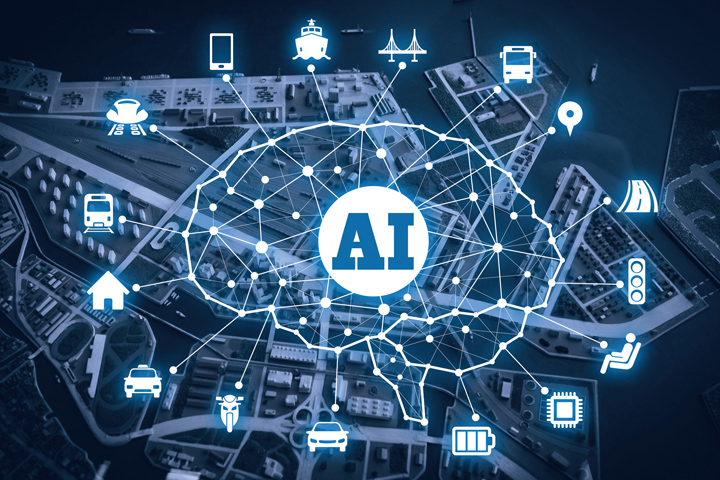Intelligent Traffic Management System Drives Collaboration for Shenzhen Traffic Police
Enterprise products, solutions & services

On November 15, 2017, the Shenzhen ‘Traffic Brain’ project, a collaboration between Huawei and the Shenzhen Traffic Police Bureau, was announced at the Smart City Expo World Congress. The project stood out from more than 300 leading smart city projects from around the world and won the only Safe City Special Award at the global event.
This prestigious award is the result of the Shenzhen Traffic Police’s continuous innovation and proactive police-enterprise collaborative efforts. The ‘Traffic Brain’ relies on a large number of technologically advanced applications, including facial recognition for traffic violation detection, traffic signal timing optimization (TrafficGo), and secondary image-based traffic violation identification.
Shenzhen’s ‘Traffic Brain’ is just the latest example of the bureau’s long history with digitally-assisted law enforcement. Historically, the Shenzhen Traffic Police have been early adopters of new technologies:
These technological advancements are the direct result of the innovative spirit of the Shenzhen Traffic Police, combined with the continuous efforts of platform and application vendors.
When the Shenzhen Traffic Police started working with Huawei and other vendors (including Intellifusion, SEEMMO, and Harzone) in 2017, layer decoupling and open innovation were the guiding principles of their collaboration. The solution leveraged video cloud, big data, and AI to enhance three levels of intelligence — computing, perceptual, and cognitive — building a unified, open, and intelligent traffic management system.

Huawei’s platform helps facilitate law enforcement with its AI-optimized system computing. The platform allows Shenzhen’s traffic management system to intelligently adjust its services according to the dynamic changes to pedestrian, vehicle, and logistics flows on the streets. Compared with traditional platforms that allocate resources based on individual experience, Huawei’s platform enables more-accurate computing and efficient resource allocation.
The open algorithm warehouse increases perceptual intelligence. For example, the algorithm for collecting traffic violation information can identify objects violating the law, including motor vehicle types (buses, trucks, vehicles transporting hazardous chemicals, and small passenger cars), non-motor vehicle types (personal bicycles, shared bicycles, electric cars, and tricycles), and pedestrian types (students, commuters, delivery personnel, and elderly people).
The continued success of the ‘Traffic Brain’ solution emerges from the collaboration between the Shenzhen Traffic Police, Huawei, and many other ecosystem partners, including China Electronics Technology, Harzone, Ping An Technology, Intellifusion, SEEMMO, SenseTime, 1000video, and the Shenzhen City Traffic Planning Design Research Center.
The joint innovation team formed by these partners proactively met evolving development requirements; in fact, deployment of 40 e-Police devices using the world’s first facial recognition-based law enforcement application throughout Shenzhen occurred within 40 days. These devices were connected to the Shenzhen ‘Traffic Brain’ through optical transport networks, and Huawei’s Atlas computing platform and AI platform algorithm warehouse were adopted to enable these devices to intelligently perceive traffic objects and detect traffic violations.
In order to implement facial recognition-based law enforcement, the Shenzhen Traffic Police built a platform to integrate algorithms from many vendors based on Huawei’s AI platform; created traffic-oriented facial image databases based on Huawei’s big data platform; and integrated the platform and databases into its unified application portal. In this way, layer decoupling ensures the accuracy of facial recognition. The results of the facial recognition are then delivered to the Shenzhen Traffic Police through a unified interface. This transformation, from vehicle-based to person-based traffic violation management, represents the innovative development of this project.
Another illustrative example is the Jaywalking Regulation System. The Shenzhen Traffic Police discovered that traffic violations are common among delivery drivers in non-motor and non-standard electric vehicles, often resulting in serious accidents. In response to this situation, Intellifusion, a Shenzhen-based innovative application vendor, developed the Jaywalking Regulation System to help the Shenzhen Traffic Police better monitor, detect, and fine jaywalkers by using facial recognition technology. Ultimately, the system also reduces accidents and prevents repeat offenses.
This system proved to be very effective. The first case involved a courier who ran a red light in the city’s Futian district while driving an electric vehicle to deliver goods. The facial-recognition e-Police device installed at the intersection captured a photo of the courier on the spot, which was sent to the backend system for analysis. The system scanned the database and identified the courier in seconds. The Shenzhen Traffic Police then sent the courier a fine in accordance with the city’s traffic regulations.
With the development and widespread use of AI technology in the transportation field, the Shenzhen ‘Traffic Brain’ will continue to evolve as an intelligent traffic management system. With an open, collaborative, and shared platform, Huawei, as well as many algorithm and application vendors, will continue to work with the Shenzhen Traffic Police to explore new concepts, models, and methods to safely and intelligently manage city traffic.